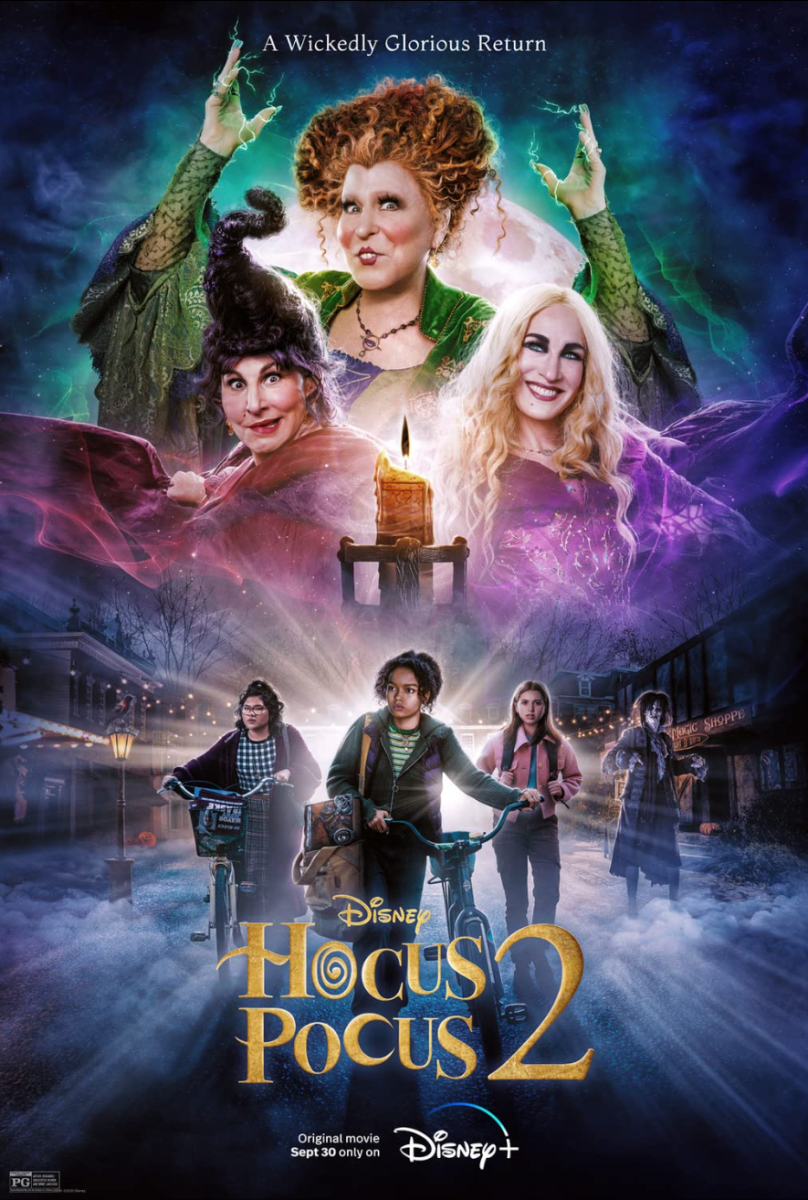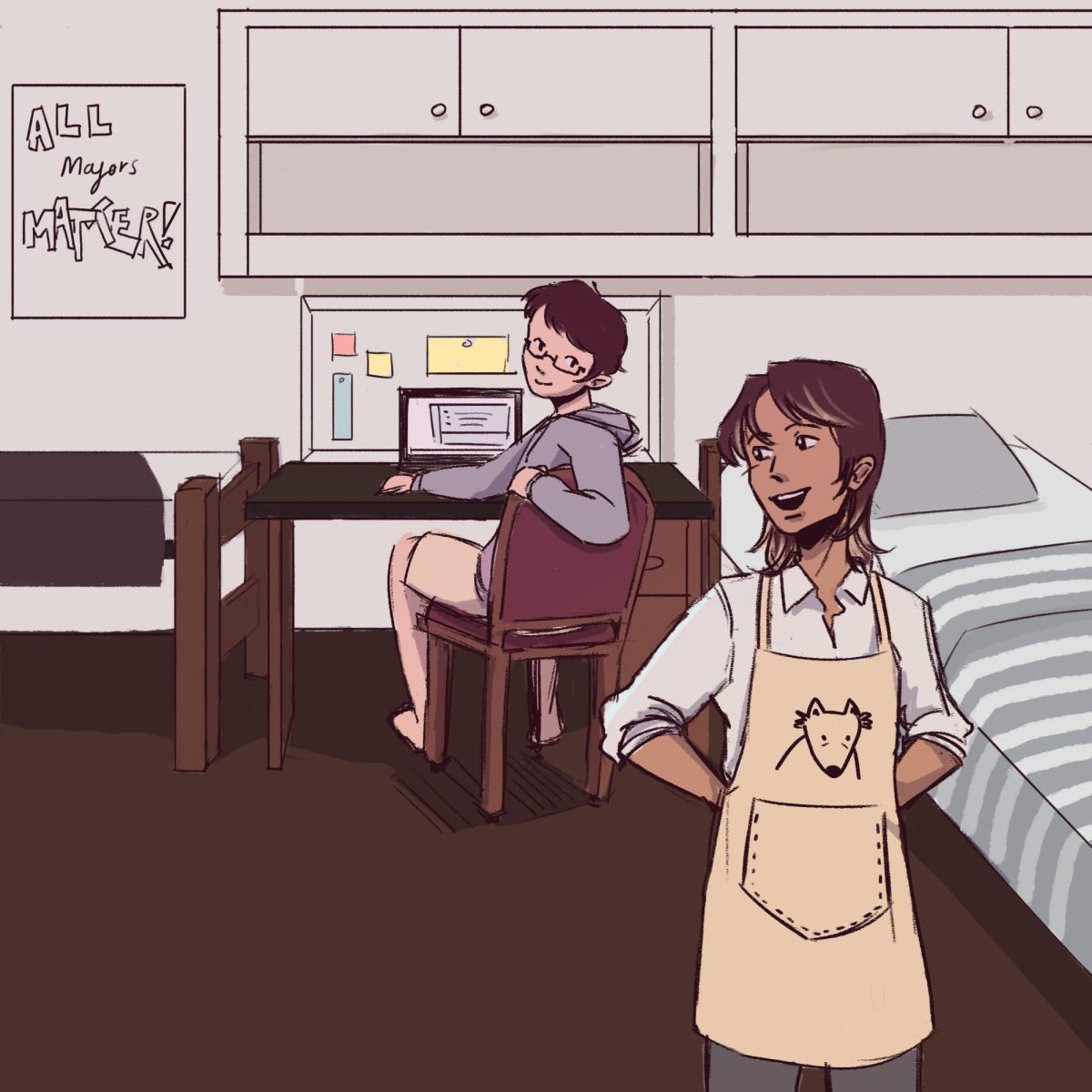Rating: 3/5
Lock up your children, the Sanderson sisters are back. “Hocus Pocus 2” attempts to recapture the magic of the original while updating the story for the 21st century.
“Hocus Pocus 2” begins with a cold open in 17th century Salem, Mass. This opening sequence calls back to the original, except instead of the witches terrorizing children, this sequel shows the witches as the terrorized children. The flashback reveals the circumstances of their banishment from Salem, how they came into possession of their monocular grimoire and sets up a Chekhov’s gun in “magicae maxima,” a forbidden spell which grants the spellcaster supreme power at a supreme cost.
Never one to alter a winning formula, the sequel more than tracks the original; the sequel seems to be a response to revisionist analyses of the Sanderson sisters and an attempt to modernize the protagonists.
The Sanderson sisters are deliciously despicable and, to our benefit, the movie makes little attempt to humanize their caricaturish characterizations. Even as a child, Winifred is horrid, and her sisters, stupid. The cold open also serves to establish a theme not alien to Disney’s oeuvre: the centrality of family.
In updating the protagonists, the script swaps out the adolescent love story in favor of instilling values of sisterhood and female empowerment. The protagonist is an independent young girl with no love interest, Becca. Her best friend, Izzy, accompanies her.
Instead of finding love, the pair reconnect with her estranged friend Cassie. The friends have felt estranged since Cassie entered into a relationship, a familiar adolescent tale. The three friends talk it out by the end, but the film fails to raise the stake enough for it to truly pay off. Even when Cassie becomes a damsel in distress at the penultimate hour, it does not wrench the heart like Dani’s final kidnapping in the original.
From creating civilian war propaganda during the Second World War all the way to the bachelorette Elsa’s ascension to the throne of Arendelle, Disney has constantly monitored the zeitgeist and found safe, profitable bets. While initially relegated to direct-to-DVD bins near Walmart checkout lines, sequels and remakes of existing intellectual property have been the safe, profitable choice in a more risk-averse Hollywood. Disney, with its ubiquity and longevity as a cultural institution, therefore offers us a way of comparing our mores with those of yesteryear by comparing remakes and sequels.
While “Hocus Pocus” was by no means edgy, the film had both heart and bite to it. Max, the protagonist, spent the entire film getting made fun of for being a virgin, and was often the butt of the joke. This provided further levity to the script whenever the Sanderson sisters were not present, helping to temper the cartoonish antics of the Sanderson sisters with more mature humor. In contrast, the sequel seems to rest on its laurels by relying on nostalgia in order to cater to its adult audience.
It’s easy to forget that “Hocus Pocus” was not always a classic. When the film was released, it was a box office failure. Through seasonal exposure around Halloween on Disney’s television programming, the film managed to garner a cult following. The film’s stars have only gone on to shine brighter in the following years.
While the original film boasts marquee names like Bette Midler and Sarah Jessica Parker, the film also marked the introduction of Kenny Ortega, a director who would prove invaluable to the film’s endurance and to Disney in the 21st century.
Kenny Ortega made his directorial debut in “Hocus Pocus.” A stage actor and choreographer before venturing into directing, Ortega would go on to create such classics as “Cheetah Girls,” “High School Musical” and “Descendants,” ushering in a new era of Disney Channel Original Movies. Through its kitschiness, campiness and musicality, Ortega’s directorial imprint courses through “Hocus Pocus.” The sequel hits those same marks, but with less commitment.
That is not to say director Annie Fletcher does a bad job. Fletcher also has a background in choreography and creates an engaging mise en scene, but the script simply does not surpass the original screenplay. The sisters still make for entertaining comic villains, but that seems a testament to the actors’ bewitching performances, something that can also be said of the original.
The end of the film leaves open the possibility of a trilogy. The grimoire passes onto Becca, revealed to be a budding witch, and she forms a coven with her two best friends. The Sanderson sisters pass on to the afterlife, foreclosing their possibility of return.
In Hollywood, success begets success. A successful sequel paves the way for a trilogy. Despite this more than adequate sequel, the jury’s still out whether the franchise can thrive without the Sanderson sisters at their core. Will the witches return for a third time? After all, witches do like to work in threes.










